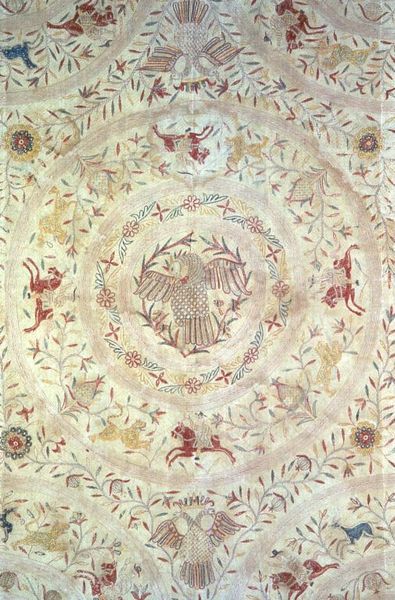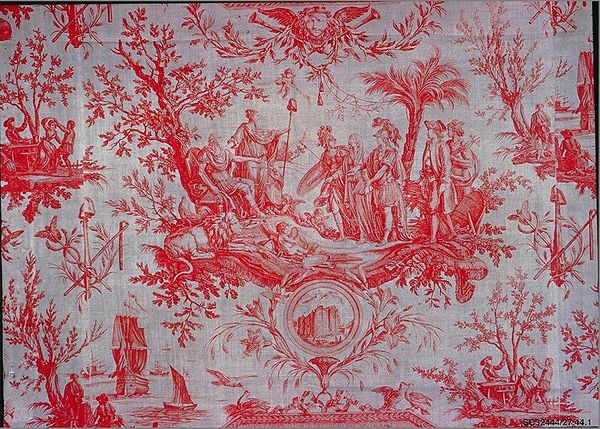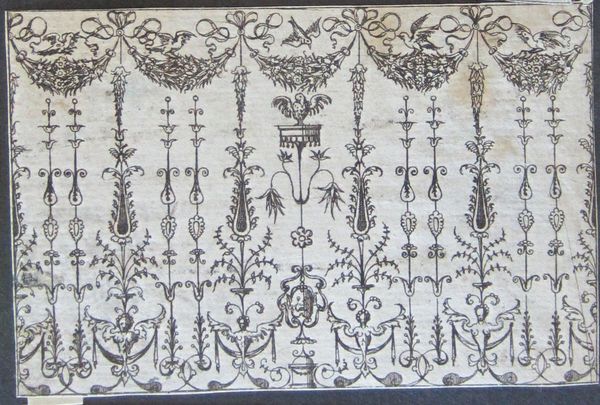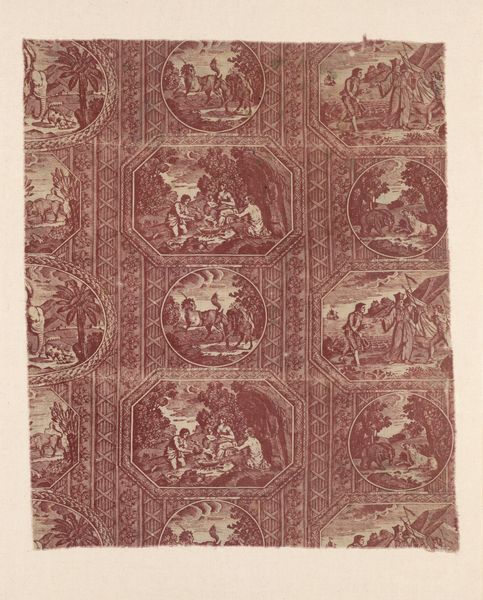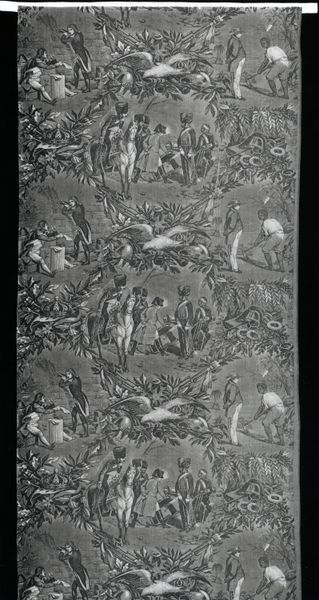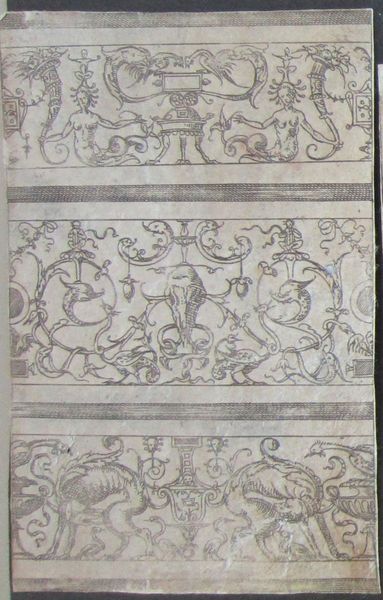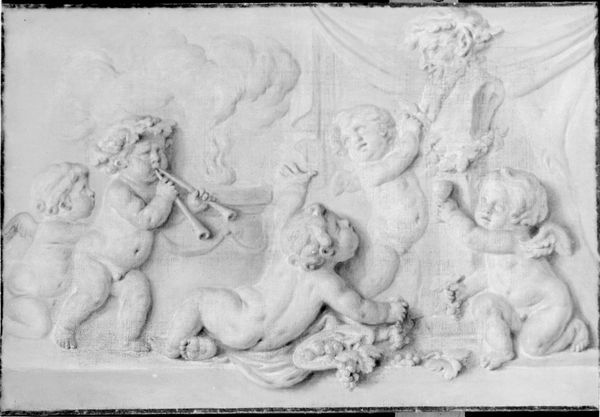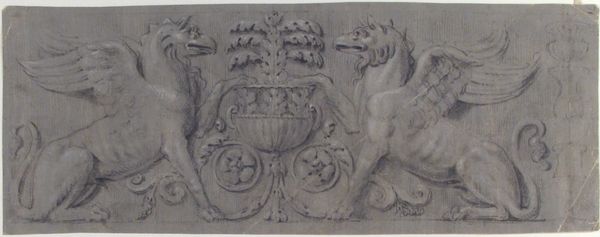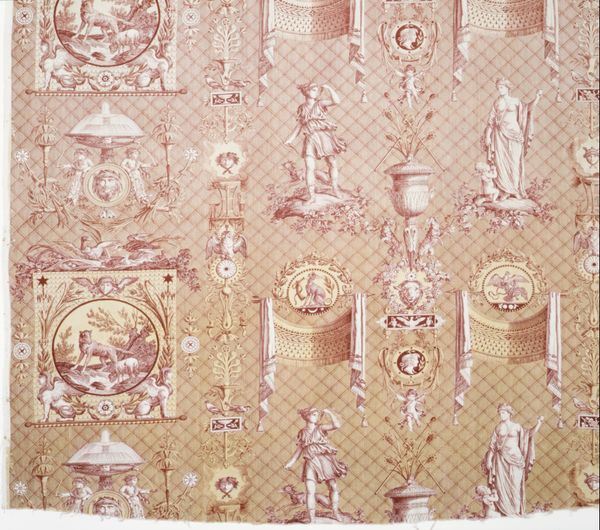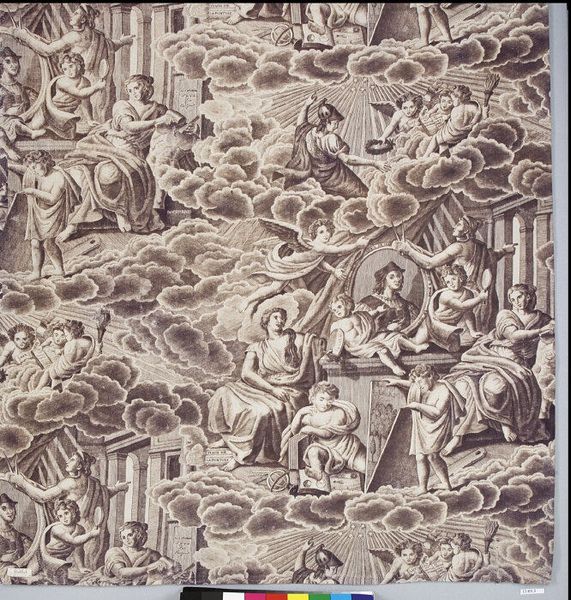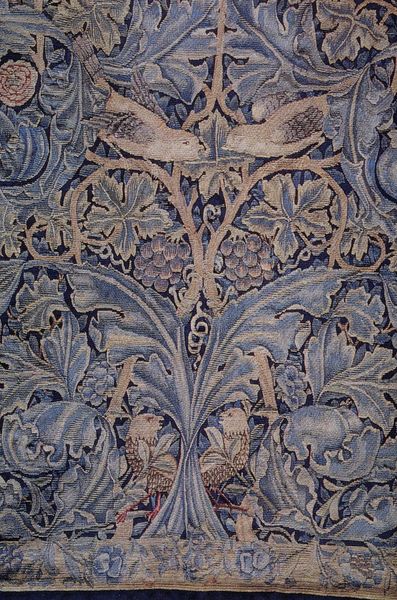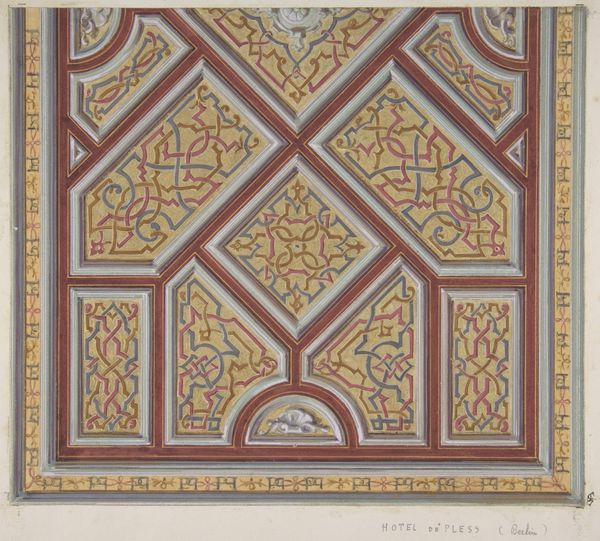
print, textile, sculpture
#
neoclacissism
#
allegory
# print
#
classical-realism
#
textile
#
fashion and textile design
#
linocut print
#
geometric
#
sculpture
#
history-painting
#
textile design
#
decorative-art
Dimensions: L. 30 1/4 x W. 38 inches 76.8 x 96.5 cm
Copyright: Public Domain
Curator: Immediately, I'm struck by the repetitive nature of this fabric panel—how each scene, though distinct, is compartmentalized. Editor: You're right. What we're looking at is "Leda and the Swan," crafted by Jean-Baptiste Huet I, between 1793 and 1803. This fascinating textile is currently housed at the Metropolitan Museum of Art. It exemplifies Neoclassical design principles. Curator: It has an almost oppressive effect with its constant, somewhat stilted representations. Almost as if the scenes of mythology were being surveilled. This red monochromatic choice amplifies a sense of restricted vision and calls up themes of colonialism. Is that meant to amplify state or spiritual control? Editor: I see what you mean, and the repetitive patterning definitely gives it a manufactured quality. It highlights the means of production. Each motif is clearly delineated, emphasizing craft and reproducibility which challenged traditional views around artistry during the Neoclassical period, doesn't it? How are the myths like those around "Leda and the Swan" translated through a process of labor intensive work that would have likely involved many skilled hands beyond Huet. Curator: I'd argue that its engagement with mythology invites critical exploration into questions of power, particularly masculine power, as the stories featured often revolved around conquest and dominance. I would also add, what sort of a narrative is built when these scenes are repeatedly placed together, with the swan and eagle juxtaposed beside Athena. How would it function in someone's home and, whose gaze is catered to? Editor: Indeed. And to delve into materiality, one has to consider the textile production of the era—the social conditions of labor involved in creating the fabric and even what dyes were available, given how its hues shift based on textile treatment methods of the time. How would such fabric speak of gender roles through not only it's decorative nature, but the material makeup that determined how it appeared. Curator: Yes. As such, its value shifts between decoration and political material depending on its contextual engagement in discourse about social norms and power struggles of its time and ours. Editor: Absolutely. When considering design practices that brought "high" art into everyday domestic life through these reproducible means we gain an even richer awareness of those very dynamics. Curator: Indeed! Editor: That's right!
Comments
No comments
Be the first to comment and join the conversation on the ultimate creative platform.
